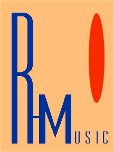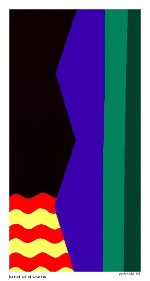Music
Creative
Home | Help | Contact Us | Useful Links | Terms of Use | MP3 Archive
<< SOJ REPERTOIRE
MAJOR ORCHESTRAL WORKS
Jazz Colours (Ballet suite for small orchestra or brass quintet, in 8 episodes - 23 minutes)
Richard Hill/Chris Barber
Jazz Colours for small orchestra is only available for hire as a complete work and not as individual episodes. Version for Brass Quintet also available - for sale only.
The original solo jazz instrument used in performances of Jazz Colours was the trombone, as played by Chris Barber. We now have alternative solo parts available (in both orchestral and brass 5t versions) for alto, tenor or baritone sax, clarinet and trumpet, as well as the original trombone. Please specify your choice of solo instrument part when ordering!
Line-up:- 1 Jazz Soloist [any front line instrument]. Flt.,ob.,clt,bsn. Hn,tpt,tbn. Perc.[various]. Vlns1[5 desks], vlns2[4], vle[3], celli[2], bassi[1].
Please specify if extra string parts are required.
BALLET SYNOPSES 'Jazz Colours' and 'Magnolia Suite' are a pair of complementary, linked ballets composed for either small orchestra or brass quintet. ‘Jazz Colours’, featuring one jazz soloist [performance time 23 minutes], concerns itself with the story of the roots and origins of jazz. It is set to a continuous score and falls naturally into 8 musical episodes. ‘Magnolia Suite’ [18 minutes] is a celebration of the various styles which existed in the days of early jazz and is a collection of 6 classic jazz titles of the vintage years of the period, including works by Scott Joplin, Tom Turpin, Bix Beiderbecke and other early jazz greats.
These stylistically authentic, almost classical works, reflect a period from the 1890's through to around 1930. They include some little known works of the era including a very rare ragtime waltz by Joplin and an exquisite ‘art deco’ setting of Beiderbecke’s ‘In a Mist’. The ballets are set in the sultry, sub tropical climate of New Orleans in the early years of the 20th century and can be realised with virtually any number of dancers so long as they are paired. This flexibility in size makes the works ideal for all types of company, whether professional or amateur. In the same genre as Sir Kenneth MacMillan’s ‘Elite Syncopations’, but also exploring blues, gospel, parade and Mardi Gras music, ‘Jazz Colours’ and ‘Magnolia Suite’ are a new, delightful and uniquely atmospheric addition to the dance repertoire.
EPISODE 1 - ARCHETYPES
92 Second MP3 sample - Grosse Rundfunk Orchester Berlin (717k).
91 second MP3 sample (B5t) - London Gabrieli Brass Ensemble (715k).
The powerful, monolithic dissonant chords represent ancient roots, perhaps even race memory. The chords are statues to an earlier culture, African in origin, around which our dancers will create images of African ritual. Though the ingredients of these musical blocks are African, later, in linear form they will become the musical scale of the early blues. We hear a pre-echo of this blues style as the music transports us into:-
EPISODE 2 - WORKSONG
59 second MP3 sample (Orchestra) GRoB. (477k).
'Worksong' leading to 'Spiritual Message' 72 second MP3 sample (B5t) - LGBE (572k).
Slavery brought the African to America. Tribal culture was cruelly and cynically destroyed. The white missionary gave some solace and the promise of a new God. He also introduced his music which the African used in his own inimitable way. This work song was first heard in about 1830 on the River Mississippi. Our dancers create an atmosphere using the rhythm of the oars to symbolise the work boat passing slowly by, rowed by slaves, with the Christian tune repeating and repeating over the never ending pulse of enforced labour. The mood becomes softer, taking us to:-
EPISODE 3 - SPIRITUAL MESSAGE
73 second MP3 sample (Orchestra) GRoB (573k).
73 second MP3 sample (B5t) - LGBE (577k).
Work songs and field hollers led to the blues. The white mans' hymn book praised the new God and the European harmonies within it influenced the early foundations of gospel singing. This slowly swaying dance captures that essence and the blues interjections which occur from time to time provide further evidence of the cultural mix which is taking place. In parallel to all this, another strand of genetic material, another ingredient, is waiting to be added to the palate.
EPISODE 4 - SILVER BELL RAG
70 second MP3 sample (Orchestra) - GRoB (569k).
62 second MP3 sample (B5t) - LGBE (488k).
The stately drawing rooms of the affluent white rich echoed, in the 1850's, to the music of European dances such as the polka, the quadrille and the schottische. In the hands of the black musicians of New Orleans, these tunes were subjected to the process of 'ragging it'. A similar treatment was given to European military marches and a new form of music developed. Ragtime. With its own ethnic composers, Scott Joplin and Tom Turpin amongst them, and utilising European structures and harmonies, ragtime became a style which to this day occupies a corner all to itself in the history of jazz. In 'Silver Bell Rag' our dancers evoke the magical, vulnerable charm of this most elegant of jazz traditions. Instead of the polka, we have the cake walk. Replacing the schottische, the slow drag two step. A new and different dance tradition evolved, which in the twenties, was to capture the hearts of millions all around the world. But there is no light without a shadow and in our ballet the happy peal of 'Silver Bell Rag' finally becomes a more reflective toll as it leads to the Delta and:-
EPISODE 5 - BLUES EVOLUTION
65 second MP3 sample (Orchestra) - GRoB (521k).
64 second MP3 sample (B5t) - LGBE (489k).
'The blues, they were always there', is a quote from a New Orleans musician in about 1920. And so they are in 'Jazz Colours'. The chords in our opening 'Archetypes' contain the notes of the blues scale. The work songs, the field hollers, the slave trade, the African call and response, all spawned the blues. For the blues represent a collective unconscious, dealing as they do with sadness, loneliness, oppression, broken relationships, despair and even death. But the blues are also gracious, dignified, and beautiful and in the expression of that beauty there is a shared, if temporary, relief from suffering. Everybody understands the blues. Our dancers portray these universal human emotions as the solo jazz musician explores the world of the blues. And then, life goes on, with vitality.
EPISODE 6 - PARADE
63 second MP3 sample - orchestra - GRoB (495k).
69 second MP3 sample (B5t) - LGBE (540k).
At a New Orleans funeral, it was traditional to accompany the cortege to the cemetery with slow, wailing music. After the burial, the cornet would sound a few notes and the marching band would parade back to a double-time march, expressing the power of life over death. Our dancers are part of the parade, joyously transforming the misery of death into the vitality of life. And life demands a celebration - especially on Mardi Gras day. . . . .
EPISODE 7 - CELEBRATION
76 second MP3 sample - orchestra - GRoB (599k).
71 second MP3 sample (B5t) - LGBE (557k).
The dancers hear the cacophony as the bands gather from all over the city of New Orleans, warming up their instruments for the day's celebrations. It is a carnival of colour, New Orleans at its most extrovert and brash. When that tailgate trombone roars into a fast stomp, he can practically raise the dead and make them dance. This is breathless, exhilarating abandonment, the stuff of ecstasy. It goes on all day, all night, until the music and the dancers tumble in gratified exhaustion and the colour changes again to the quiet, reflective shade of:-
EPISODE 8 - THANKSGIVING
62 second MP3 sample - orchestra - GRoB (479k).
63 second MP3 sample - B5t - LGBE (523k).
Before sleep, there is time for our dancers to recall the peace of 'Spiritual Message'. After the excitement, there is calm in this gentle, caressing gospel rhythm. It is soothing, mothering, womb-like. As the gentle, soft, fragmented chords signal the end of the ballet we leave our dancers in sleep. After all, New Orleans is 'The Land of Dreams'.
<<SOJ Repertoire
Next>>
Home | Help | Contact Us | Useful Links | Terms of Use | MP3 Archive
Copyright ©2023 Richard Hill. Site design by Paul Hill.


